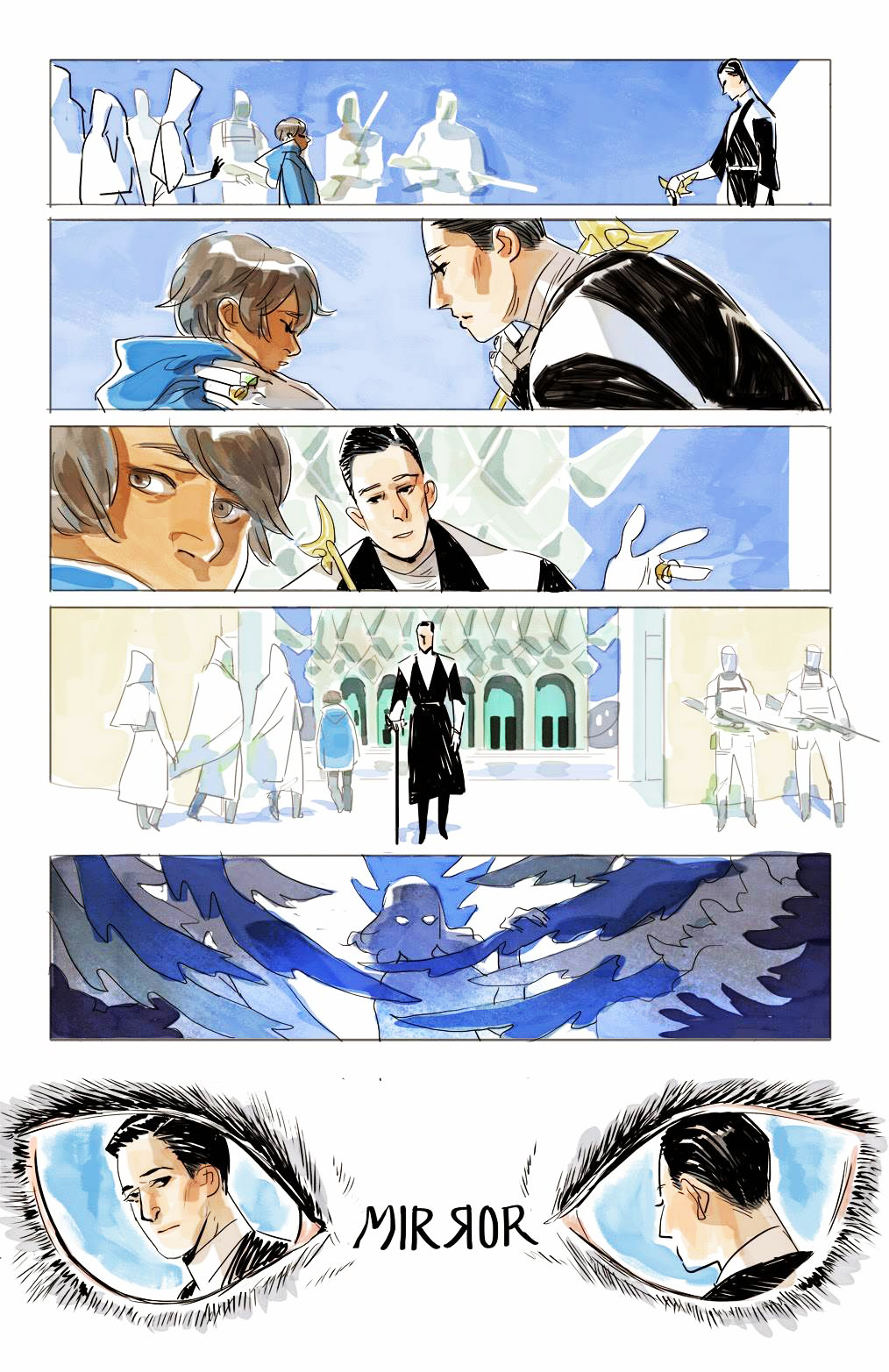Creator-owned comic series show individuality, provide fresh ideas

Image Comics recently introduced its newest comics, such as “8House,” a fantasy series featuring a rotating group of artists and writers. (Courtesy of Emma Rios and Hwei Lim/Image Comics)
By Joshua Greenberg
Jan. 14, 2015 2:51 a.m.
Comic books are everywhere – Marvel and DC Comics are mining decades of story lines for a huge slate of movies and television shows. But comics are more than a source to be mined for superhero blockbusters. New creators are dealing with issues every month in ways that couldn’t be done in other formats – issues of comic books.
If I wrote a top-10 list of the best monthly comic books I read in 2014, Marvel would take two slots, DC wouldn’t take any and Image Comics would take, like, six.
During last week’s Image Expo, a one-day event in San Francisco, creators working with Image Comics, America’s third-largest comic book publisher, brought forth a number of new releases. There’s thoughtful science fiction in “After Death,” a gay space fantasy in “Kaptara” and horror in “Nameless.” Two others, both about teens discovering as-yet unidentified mysteries, seem to take themes from the 1986 film “Stand by Me.”
Comic books published at Image are “creator owned,” which means that copyright is held by the original creative team. This is a huge difference from the “Big Two” – Marvel and DC – where work is for hire and rests with the company. The collaborators on an independent comic have a much more vested interest in the success of their work since they own the rights. They stand to see more out of adaptations, licenses and long-term sales. They aren’t tied down by editorial mandates and genre requirements, rotating teams and other factors that lead to an inconsistent voice.
The relationship between writers and artists is vital to the health of the mainstream industry. In the 1990s, people viewed artists as the key figures in comic books. Style without substance killed companies. During this period Rob Liefeld, Jim Lee and Spawn creator Todd McFarlane left Marvel to found Image Comics.
More recently, the pendulum swung the other way, with writers seen as the key creative voice. New writers revamped long-running series to fit their tastes. As much as it rolls off the tongue to talk about, say, Brian K. Vaughan’s “Saga,” calling it that is a disservice to artist Fiona Staples’ tight collaboration. It’d be a completely different comic if anyone else illustrated it because Vaughan writes his comic to fit Staples’ style. In fact, it’s relatively common to have cartoonists write their own work, but a writer without art just has a script.
Even when artists are credited, rarely are they distinguished from the separate inkers, colorists and letterers, who are the often-unsung heroes of comic books. They rarely get the thanks they deserve in defining the look and feel of a book. Jordie Bellaire’s restrained palette was essential to the look of Warren Ellis and Declan Shalvey’s Marvel miniseries “Moon Knight,” and defines the feel of the team’s upcoming Image series “Injection.”
The new trend of releasing bimonthly and even weekly comics compounds this. No artist could possibly draw a 22-page comic alone every week, and for some styles even a month is tiring and stressful. When artists rotate without care for the stylistic havoc being wrecked, the writer really is the only consistent voice.
To prevent this, many indie titles with a separate writer and illustrator take a break between trade paperback arcs. “Saga” takes around two months off for every six issues so Staples can draw the entire thing, including covers.
In recent years, a new pattern in the Image scene has become apparent. A writer or artist starts out on a relatively unknown title, and uses success there to get a position working on a superhero comic like “Iron Man.” Then, they go back to creator-owned work, using the following they gained at Marvel or DC to make money off of their new wholly-owned series. Lately, I’ve seen some teams shed the Big Two entirely, which would have been unthinkable a decade ago.
The comic book model is changing. “Prophet,” based on Liefeld’s short-lived extreme 1990 superhero got rebooted by indie cartoonist Brandon Graham as a far-future space opera in 2012, with a rotating array of artists. Main artists Simon Roy and Giannis Milonogiannis do very different work, but they’re used to showing different perspectives. Different artists tell the sprawling story from the viewpoints of warring clones of John Prophet, an ancient hero.
This year Graham oversees two new projects, “Island,” a science fiction anthology series featuring an impressive line-up of artists, and “8House,” an interconnected set of fantasy miniseries. The second 8House miniseries, “Mirror,” by Emma Rios and Hwei Lim is about a magical space colony that breeds human-animal hybrids, causing discontent between the creators and the hybrids. “8House” and “Island” are two of the things I’m looking forward to most in comic books this year.
Given a choice, I’m willing to take some delays in exchange for a better final product than having the mercenary deadlines of the marketplace prevent unique artists from doing their best work. I’m looking for cohesive collaborations with fresh ideas. These are much easier to find in creator-owned series.
What comic books have you been reading lately? Email Greenberg at [email protected].


